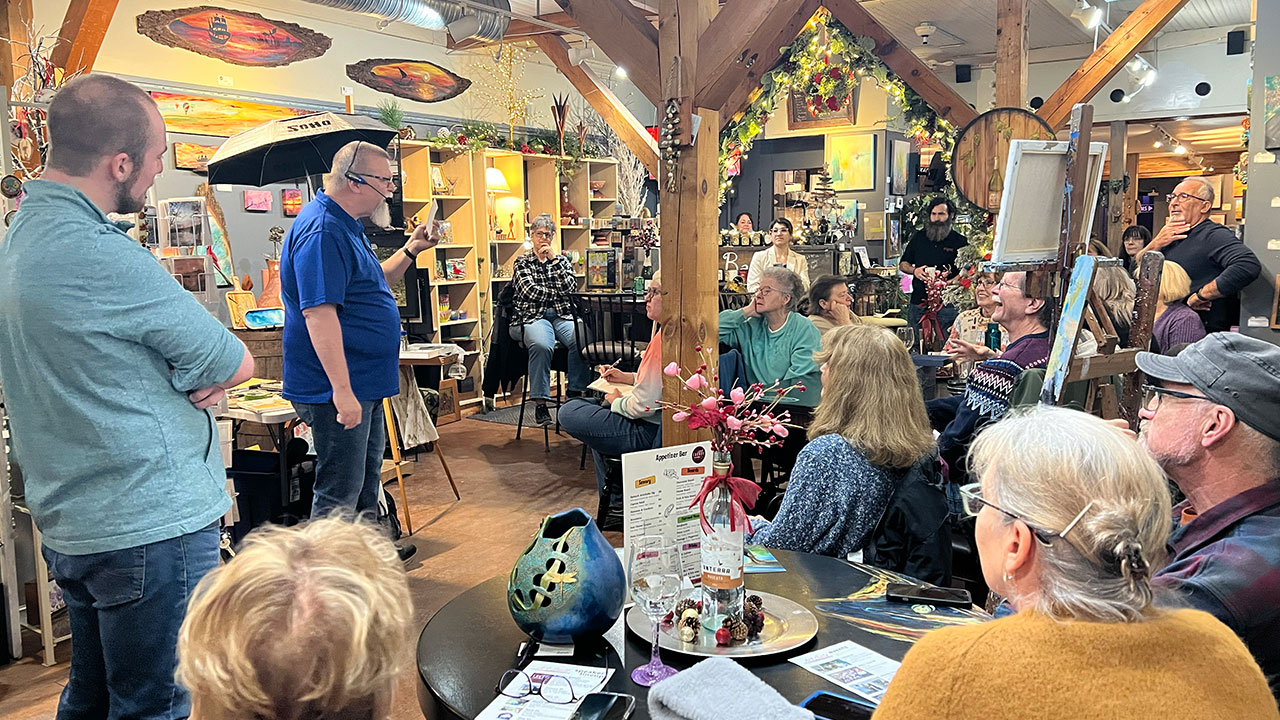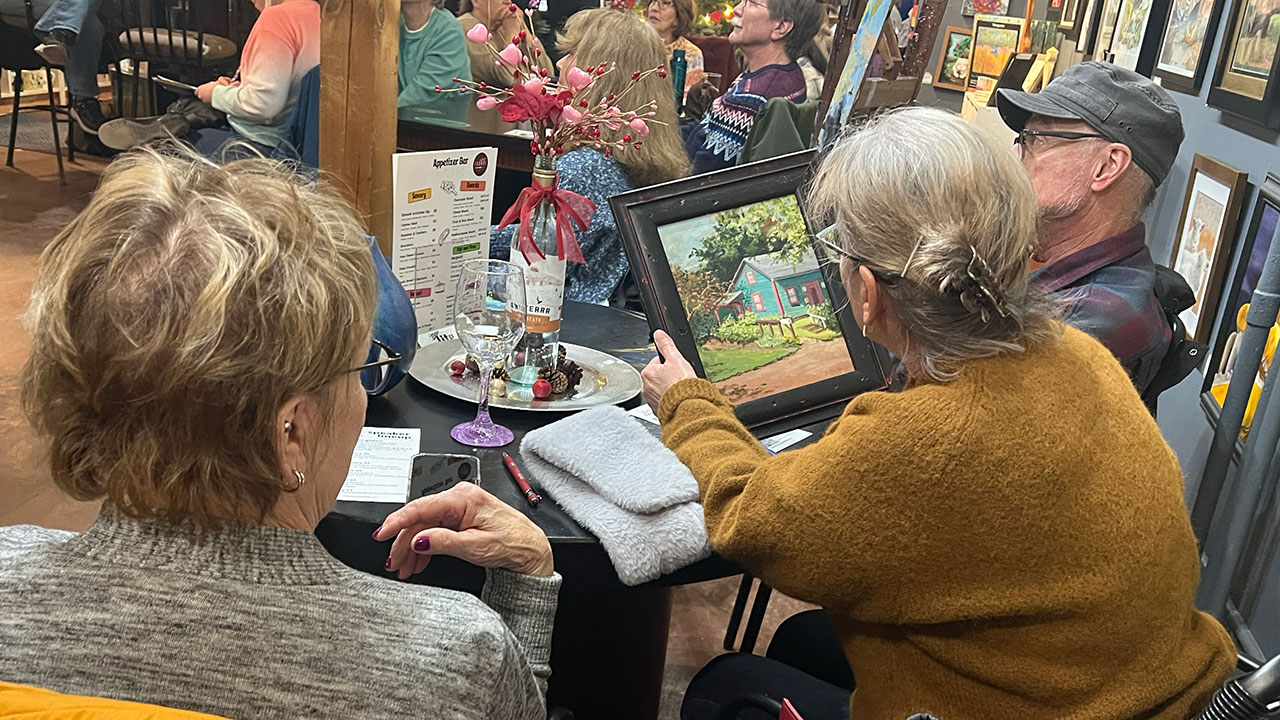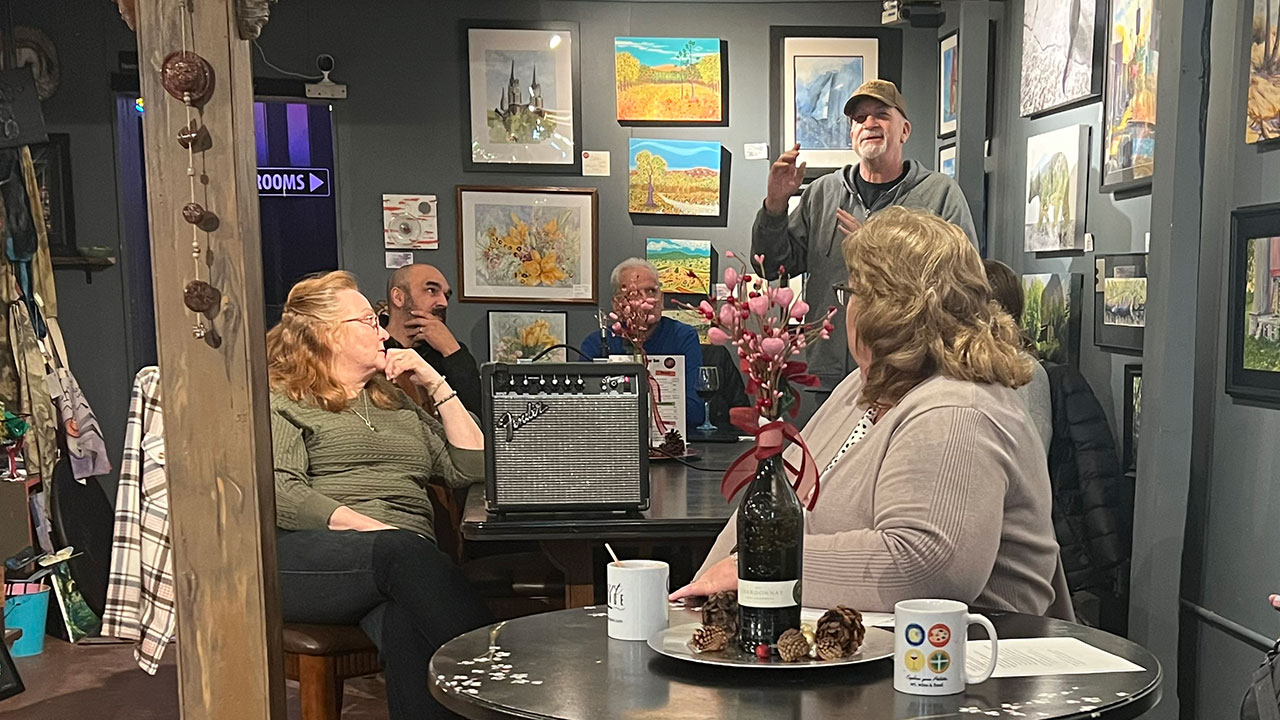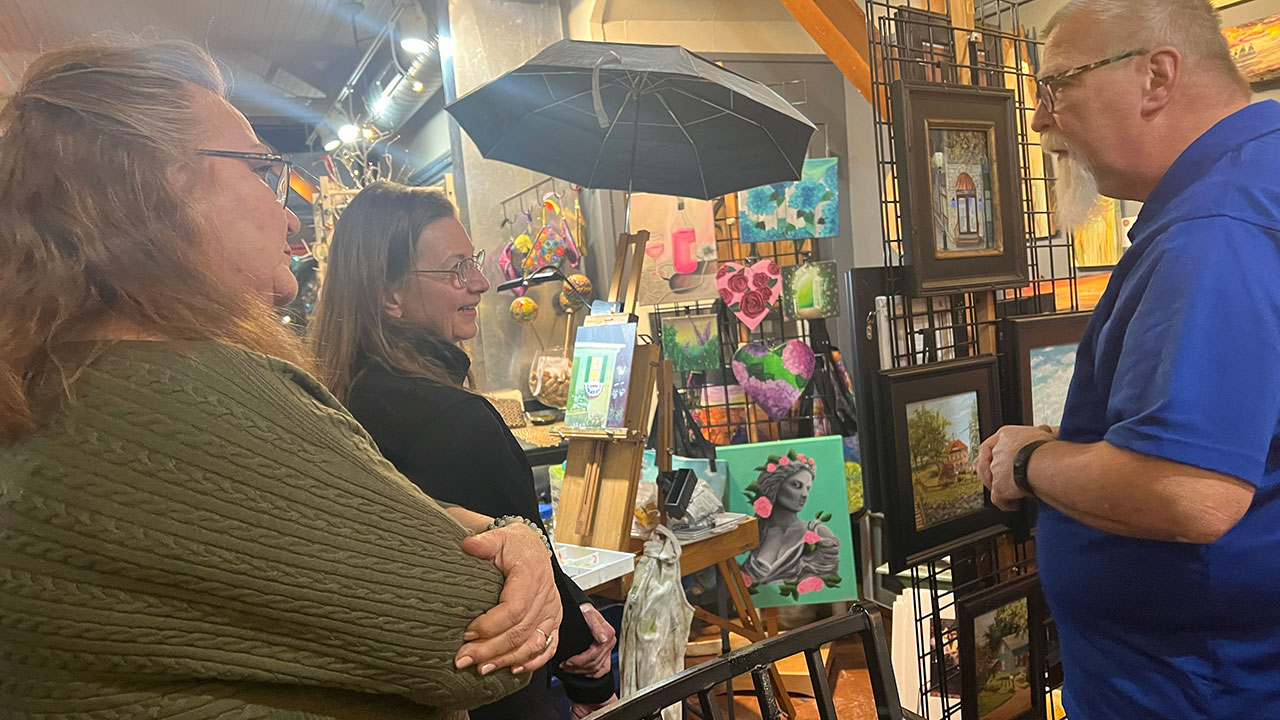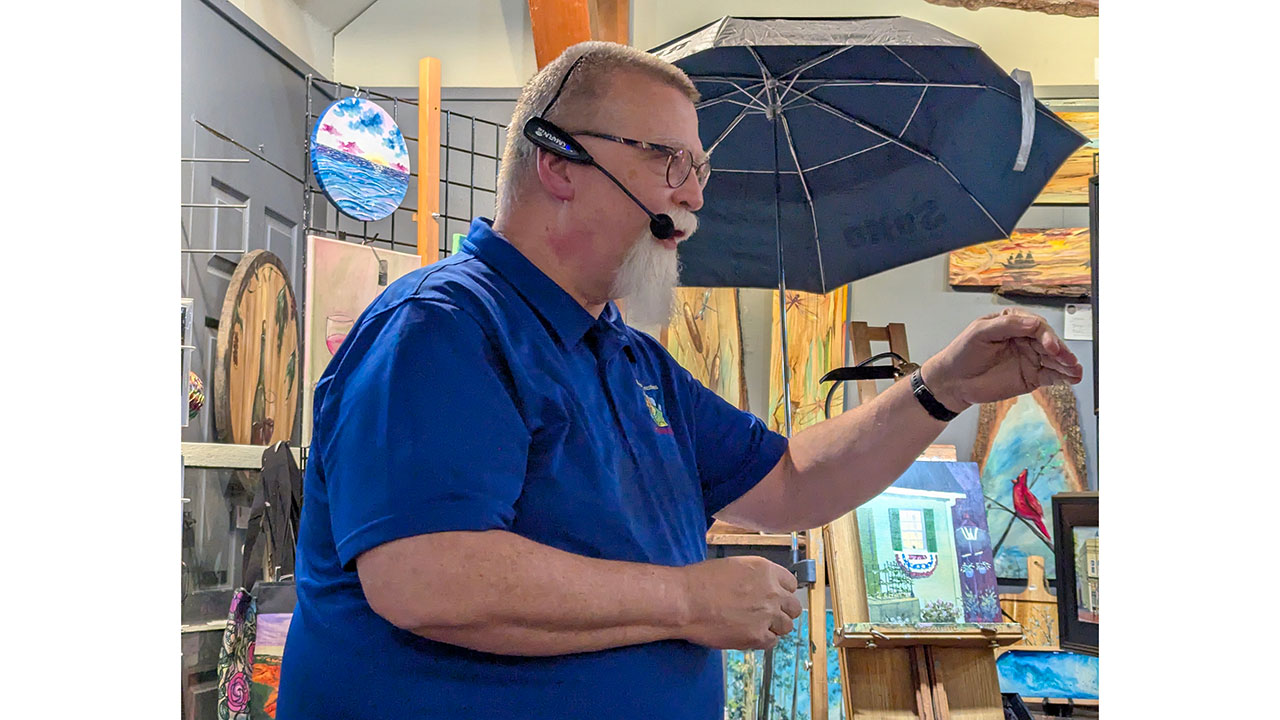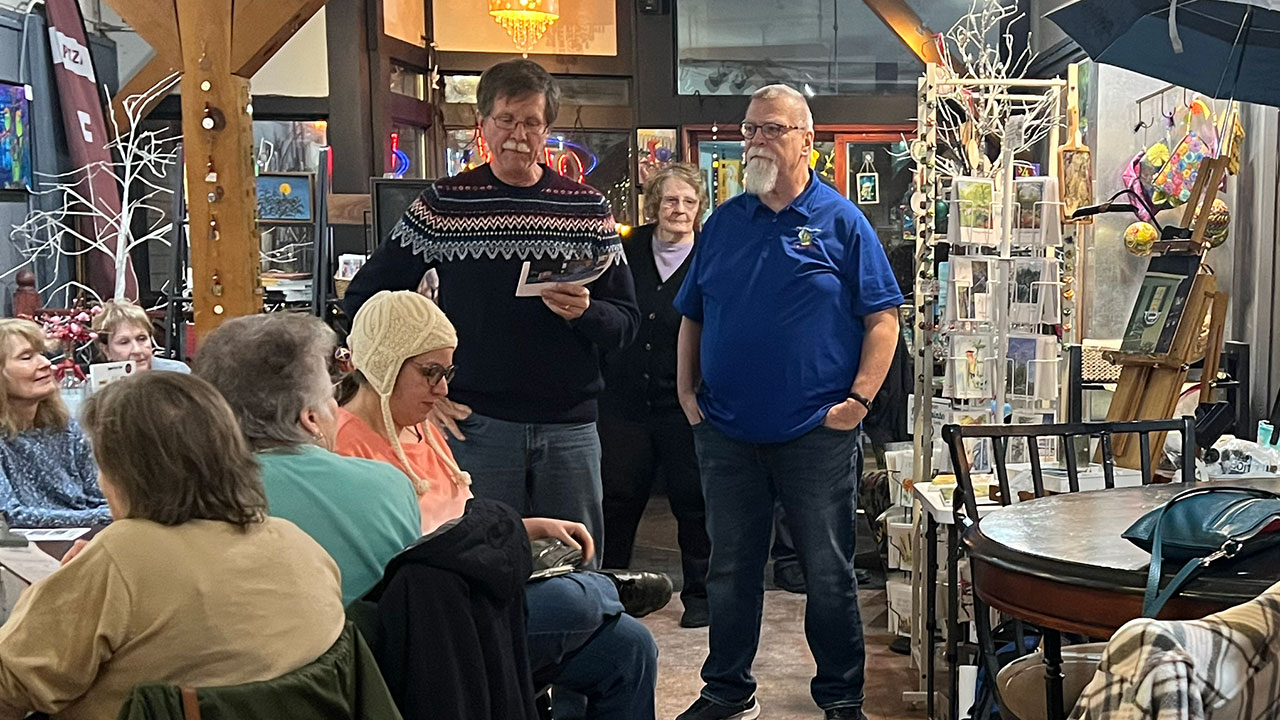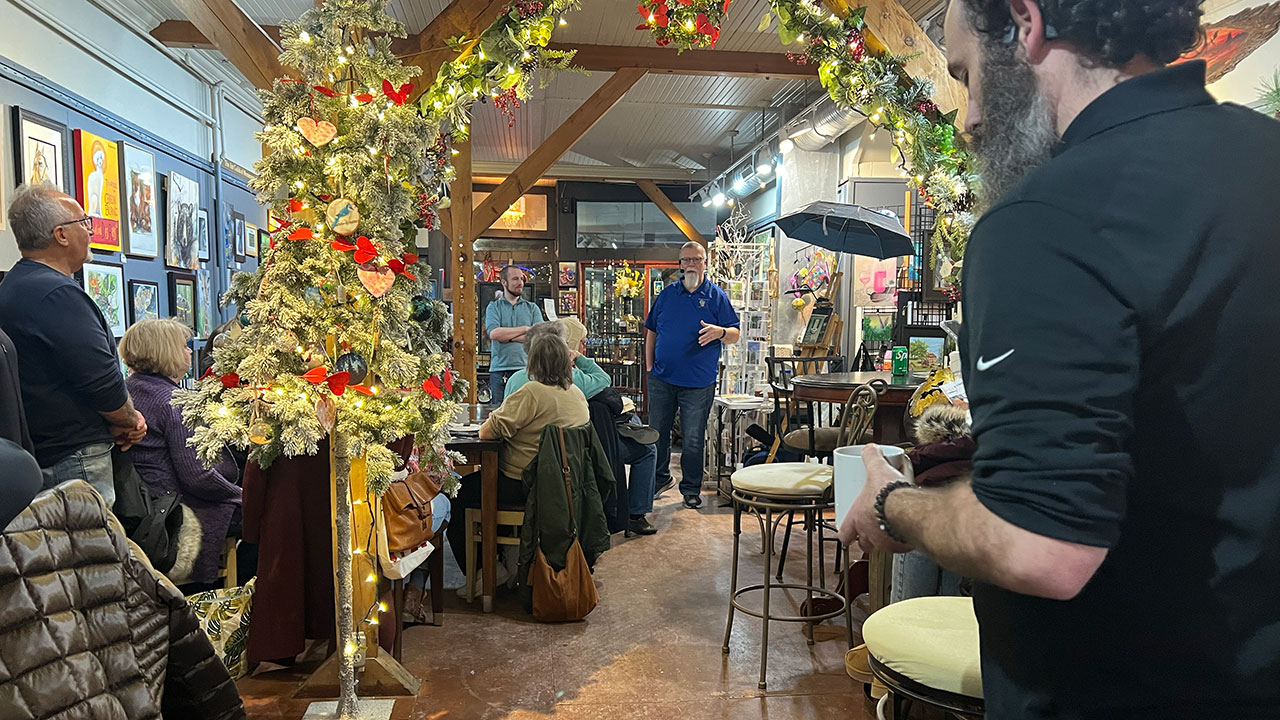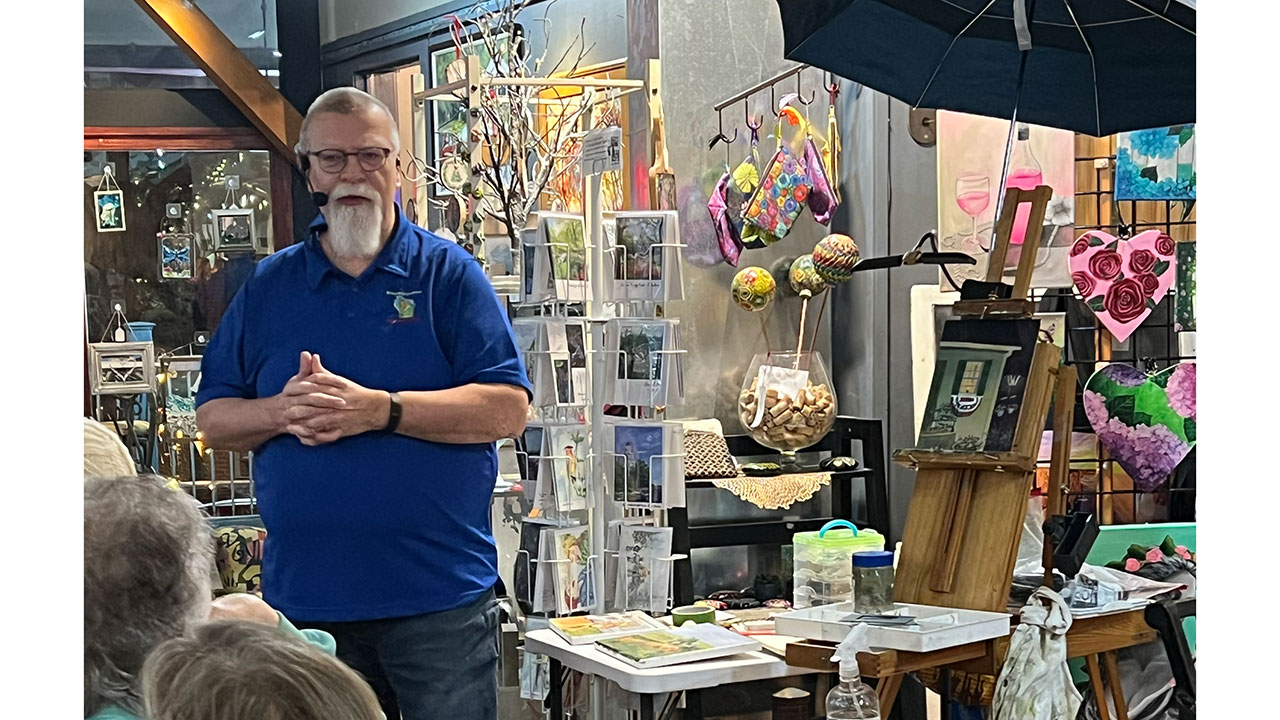Founding member, Pete Zielinski, came prepared to show us what he’s learned discovering the process of plein air painting at our membership meeting on January 28, 2025. Pete has participated in several plein air events, including Mineral Point’s Paint The Point, Cambridge Plein Air event, Tosa’s ART64, and taking 1st at 2024’s Menomonee Falls’ Falls Festival of the Arts.
Over the past couple years, Pete added plein air painting to his artistic experience which blends well with his love of camping, hiking and traveling the back roads. Camping in 28 Midwest states, the lakes, trails and breathtaking skies inspire him to capture that scenery on canvas. Pete’s goal is to create a familiar setting for viewers, meshing the art with the observer and rekindling the memory of a time that brought them joy.
Holding up a small self-made viewfinders, Pete demonstrated how he assesses possible plein air subjects. Seek out a location that inspires you, yet is close to your vehicle to access supplies. Most events require that at least 95% of your painting be done on location, with any remaining time for touch-up in studio.
He emphasized that it’s important to sketch first. Sketching helps define your painting and its composition which Pete likes to do with a watercolor brush pen or graphite pencil. The practice of plein air doesn’t allow time to build your painting from background to foreground —it’s more like a coloring book approach where you’re filling in defined areas of color. Keep in mind that the sun moves fast, changing light, shadows and color values. Plein air challenges the artist to map out masses and shapes quickly.
Working in acrylics, Pete is in the minority amongst plein air painters. The majority work in oils, as well as some watercolorists. Acrylics dry fast so Pete utilizes retarding solution to keep the paints wet along with a water spray bottle.
Pete’s recommended supplies include a compartmented plastic paint tray with a lid and palette, painter’s tape to help with straight edges like in buildings, and a plastic jar for water (won’t break if dropped!). An umbrella is also nice and will keep you and your artwork protected. Choose a dark colored one to cut down on reflections.
Finally, Pete seals his acrylic paintings with a flat-finish polyurethane. Most plein air competitions require your finished painting to be framed, so you’ll need to pack framing supplies as well as painting supplies.
We appreciate hearing Pete’s humble approach to new techniques and materials. He’s a great resource for the Guild and always willing to share.



